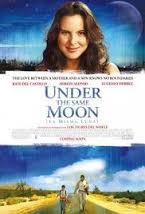
Armando Alvarez, played by Will Ferrell is the son of Miguel Ernesto Alvarez, played by Pedro Armendariz Jr, an esteemed ranch owner in the region where they reside. Armando’s younger brother Raul, played by Diego Luna, arrives at the ranch with his fiancé Sonia, played by Genesis Rodriguez. As the Alvarez’s ranch faces financial strains, the arrival of Raul puts Miguel at ease thinking he will be the ranch’s savior because Raul has become a successful business man. It turns out that Raul is in the business of drug trafficking and has arrived at the ranch with a mission to take control of that territory. La Onza, played by Gael Garcia who turns out to be Sonia’s repressive uncle and the leader of the drug cartel in that region. He is not pleased with Raul’s arrival, and seeks vengeance for Sonia’s capture. At the end the Alvarez family find themselves in a war with La Onza and his people and it’s all up to Armando to save the day.
Matt Piedmont created an American satire completely in Spanish. He explores every stereotype possible about Mexicans. With its melodramatic plot, he pokes fun of Latin telenovelas. Often over directing the scenes to mimic a Mexican soap opera. With Armando’s character he plays on the notion that Mexicans are people of the land and don’t understand complex themes or ideas. He goes as far as to having Armando sing a song that literally has the words ” I live a simple life, I am a friend of the cattle, I don’t know how to think, I’m just rancher”. Armando’s father epitomizes the Macho man figure of Mexico. Miguel Alvarez is proud of his younger son, Raul for being intelligent, financially successful, and having a beautiful fiancé. He is ashamed of Armando because he posses qualities that he considers too feminine. He even draws comparisons between Armando and his mother, saying he is dumb and too emotional like her. La Onza plays your stereotypical drug lord; he wears fancy clothes, throws extravagant parties with beautiful woman. He is ruthless and uses violence to intimidate.
La Casa de Mi Padre, is not only a comedy that makes fun of Americans’ clichéd views of Mexico, it also touches on the Mexico’s prime issue; the drug trade. While keeping a bizarre comedic approach, Piedmont is able to make a statement about the underlying problem of drug trafficking. Which in his opinion is the demand of drugs coming from the United States. In one of the most important scenes of the film, Armando confronts Raul about his unlawful business. Raul explains that he is only in the drug business because of the supply and demand from the U.S. He also discussed the issue of police corruption from both sides of the border. Drug Enforcement Administration (DEA) agent Parker, works together with the chief of the municipal police of that region to instigate a war between La Onza and Raul. Parker famously says, “Let them kill each other”.
This film only received two stars on rotten tomatoes and grossed eight million in the box office. A disappointing figure for a Will Ferrell movie. Let’s remember that this movie is entirely in Spanish. Even though, Will Ferrell has the star power, you have to be a dedicated fan to endure 84 minutes of him speaking Spanish. There’s not much a white audience can relate to in this film. In fact, this is where imaginative resistance takes place. As Flory explains in Imaginative Resistance, White Gaze in Machete and the Help, imaginative resistance is the unwillingness to suspend yourself from reality and imagine what the author of the fiction prompts. In this case it might be hard for the white audience to imagine what Piedmont is trying to say, because at first sight the movie might seem like a racist film making fun of the Mexican culture. But, we quickly get the sense that the white culture is the one that is being attacked. This is something that the white audience might be reluctant to accept. The over exaggeration of Mexican stereotypes suggest that the director thinks these views of Mexicans are ridiculous. The Latino community is used to being blamed for social and economic issues, however, Americans seem indignant when the blame is placed on them. In the end of the film, Armando tells the DEA agent that not all Mexicans are drug traffickers, in response the DEA agent says, not all Americans are bad. This suggests that there is a mutual understanding that there are cultural issues on both sides of the border.
Flory, Dan. The White Gaze and Machete
http://www.amazon.com/Casa-Padre-Blu-ray-Will-Ferrell/dp/B007L6VQ2W
(Must Watch)



